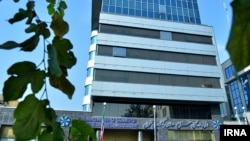In its latest report, Iran Chamber of Commerce, Industries, Mines and Agriculture (ICCIMA) says its survey of “economic actors” shows optimism has sharply dropped in the country.
Established in 1984, ICCIMA is a non-profit and non-governmental institution which aims at facilitating economic growth and development.
Every month, ICCIMA sets a fixed questionnaire for the country's economic “actors” and influential business people and compiles a new Purchasing Managers' Index (PMI) based on their responses.
The questions asked include the amount of production, sales and exports, the rate of products delivery, initial inventory, the number of new hires, the price of raw material, the cost of products, and future production forecasting.
Results published on ICCIMA's (SHAMEKH in Persian) website show that PMI in March 21-April 20 period stood at 36.38 units which indicates an almost nineteen-point drop.
Any result showing a +50-unit indicates that the economy is performing well, while a -50-unit implies that the economy is on the verge of contraction and recession.
A Radio Farda economic analyst explained that the drop followed a period of optimism, when Europe promised in late January to set up a special trade mechanism for Iran. But in March that optimism dissipated as tangible action was taken by the EU.
On April 28, the International Monetary Fund (IMF) predicted that, despite exporting 900,000 barrels of crude oil per day, Iran's economy is expected to shrink by 6% this year, after having contracted 3.9% last year.
By contrast, it clocked 3.8% growth in 2017, before the Trump administration re-imposed economic sanctions after withdrawing from the Joint Comprehensive Plan of Action (JCPOA) or Tehran's 2015 nuclear deal with world powers. The deal offered the Islamic Republic relief from prior sanctions in exchange for Iran's commitment to keep its nuclear program exclusively peaceful.
In its report, the IMF noted that factors, including the price of raw materials, products, and production forecasts have played a decisive role in reducing GDP.
Inflation rate in Iran that started to soar from the beginning of last year (March 21, 2018), could reach to 50% as the U.S. sanctions are driving Iran's oil exports to zero.
Therefore, the grim outlook would place Iran's inflation on par with crisis-hit Sudan and only behind Venezuela and Zimbabwe, two countries suffering from political unrest, IMF data show.
Based on several reports, the main reasons behind soaring inflation in Iran are higher production costs mainly because of the fast depreciating national currency, rial.
The rial has dropped almost fourfold in the past 15 months on the open market, disrupting Iran's foreign trade and raising annual inflation.
Iran's economy shrank by 3.9 percent last year, according to IMF estimates, and is expected to shrink by 6 percent in 2019, Jihad Azour, director of the IMF's Middle East and Central Asia department, told Reuters adding, however, that the projection preceded the latest elimination of waivers.
"Clearly the re-imposition of sanctions and the removal of the [oil purchase] waivers will have an additional negative impact on the Iranian economy both in terms of growth and in terms of inflation, where inflation could reach 40 percent or even more this year," he said.
U.S. sanctions against Iran have denied its government more than $10 billion in oil revenue, a U.S. official said earlier this month.


